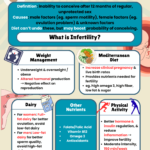Something important to watch out!
注意! 有重要信息!
The glycemic index (GI) is a ranking of carbohydrates on a scale from 0 to 100 according to the extent to which they raise blood sugar (glucose) levels after eating.
升糖指数(GI)是根据饮食后血糖(葡萄糖)水平升高的程度,对碳水化合物从0到100的排名。
Foods with a high GI (greater than 70) are those which are rapidly digested, absorbed and metabolised and result in marked fluctuations in blood sugar (glucose) levels.
高GI的食物(超过70) 是那些能被人体快速消化,吸收和代谢的食物,从而导致血糖水平有明显的波动。
Low GI carbohydrates (lower than 55) – the ones that produce smaller fluctuations in your blood glucose and insulin levels – is one of the secrets to long-term health, reducing your risk of type 2 diabetes and heart disease.
低GI (少过55) 食物是减小血糖和胰岛素水平波动的碳水化合物。它们是保持长期健康的秘诀之一,可降低第二型糖尿病和心脏病的风险。
Why should I eat foods with a low Glycemic Index?
为什么要吃低升糖指数的食物?
Eating foods with a low Glycemic Index may help you to:
吃低血糖指数的食物可能会帮助您:
- Control your blood glucose level
控制你的血糖水平 - Control your cholesterol level
控制胆固醇水平 - Control your appetite
控制你的胃口 - Lower your risk of developing heart disease
降低发生心脏病的风险 - Lower your risk of developing type 2 diabetes
降低发生第二型糖尿病的风险






